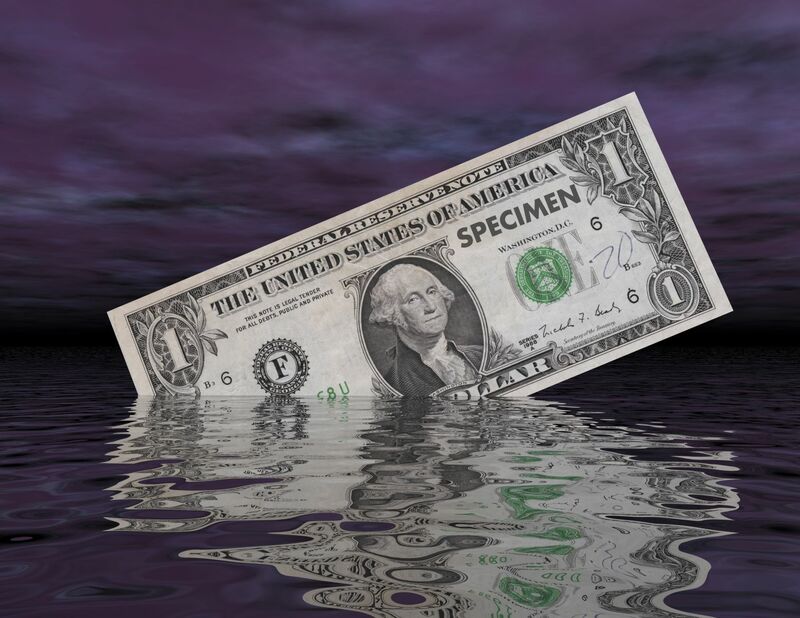
The dollar index (DXY00) on Friday fell by -0.25%. The dollar retreated from a 1-1/2 week high Friday and posted moderate losses on weaker-than-expected U.S. economic news on Feb ISM manufacturing, Jan construction spending, and the University of Michigan U.S. Feb consumer sentiment. A decline in T-note yields Friday also weighed on the dollar.
The U.S. Feb ISM manufacturing index unexpectedly fell -1.3 to 47.8, weaker than expectations of an increase to 49.5.
U.S. Jan construction spending unexpectedly fell -0.2% m/m, weaker than expectations of +0.2% m/m and the biggest decline in 15 months.
The University of Michigan U.S. Feb consumer sentiment index was revised downward by -2.7 to 76.9, weaker than expectations of no change at 79.6.
Atlanta Fed President Bostic said the Fed needs to hold interest rates higher for longer, so inflation recedes further and it won't have to go back and raise rates again.
Fed Governor Waller said he would like to see the Fed's short-term Treasury holdings increase and mortgage-backed securities (MBS) holdings go to zero.
The markets are discounting the chances for a -25 bp rate cut at 5% for the March 19-20 FOMC meeting and 30% for the following meeting on April 30-May 1.
EUR/USD (^EURUSD) on Friday rose by +0.29%. The euro on Friday moved moderately higher and garnered support on stronger-than-expected Eurozone economic news. Eurozone Feb CPI rose more than expected, and the Jan unemployment rate fell to a record low, hawkish factors for ECB policy. Also, the Feb S&P manufacturing PMI was revised higher. In addition, the euro rose on hawkish comments from ECB Governing Council member Holzmann, who warned against cutting interest rates too early.
Eurozone Feb CPI eased to +2.6% y/y from +2.8% y/y in Jan, stronger than expectations of +2.5% y/y. Feb core CPI eased to +3.1% y/y from +3.3% y/y in Jan, the slowest pace of increase in almost two years.
The Eurozone Jan unemployment rate fell -0.1 to a record low of 6.4%, right on expectations.
The Eurozone Feb S&P manufacturing PMI was revised upward by +0.4 to 46.5 from the previously reported 46.1.
ECB Governing Council member Holzmann warned against cutting interest rates too early after Friday's news showed Eurozone price growth slowed less than expected in February.
Swaps are pricing in the chances for a -25 bp rate cut by the ECB at 4% for its next meeting on March 7 and 21% for the following meeting on April 113
USD/JPY (^USDJPY) on Friday rose by +0.10%. The yen weakened Friday on comments from BOJ Governor Ueda, who said the BOJ’s price target was not yet in sight. The yen recovered from its worst levels on a decline in T-note yields. The yen also had support from better-than-expected economic news on Japan Feb consumer confidence and on Japan’s labor market after the jobless rate fell to a nearly 4-year low.
BOJ Governor Ueda said, "We are not yet in a position to foresee the achievement of a sustainable and stable inflation target," dampening expectations that the BOJ may exit its negative interest rate policy as soon as this month's policy meeting.
The Japan Feb consumer confidence index rose +1.1 to a 2-1/4 year high of 39.1, stronger than expectations of 38.3.
The Japan Jan jobless rate fell -0.1 to a nearly 4-year low of 2.4%, right on expectations.
Swaps are pricing in the chances for a +10 bp rate increase by the BOJ at 31% for its next meeting on March 19 and 78% for the following meeting on April 26.
April gold (GCJ4) on Friday closed up +41.0 (+2.0%), and May silver (SIK24) closed up +0.479 (+2.09%). Precious metals on Friday rallied sharply, with gold climbing to a 9-week high and silver climbing to a 1-1/2 week high. A slump in the dollar on Friday was supportive of metals. Also, lower global bond yields on Friday were bullish for precious metals. Gains in gold accelerated after Friday’s weaker-than-expected U.S. economic reports on Feb ISM manufacturing and University of Michigan Feb consumer sentiment boosted speculation the Fed would soon begin cutting interest rates.
On the bearish side, silver prices were undercut after the U.S. Feb ISM manufacturing index contracted more than expected, and Jan construction spending unexpectedly declined, negative signs for industrial metals demand. Also, gold remains under pressure from the ongoing long liquidation of gold by funds after long gold holdings in ETFs fell to a 4-year low Thursday.
On the date of publication, Rich Asplund did not have (either directly or indirectly) positions in any of the securities mentioned in this article. All information and data in this article is solely for informational purposes. For more information please view the Barchart Disclosure Policy here.






